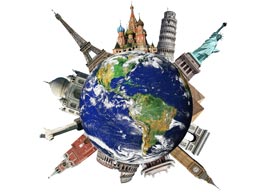
March 13, 2015

Source: Shutterstock
As the European Coal and Steel Community of Jean Monnet evolved into the EU, we were told a “United States of Europe” was at hand, modeled on the USA. And other countries and continents will inevitably follow Europe’s example.
There will be a North American Union of the U.S., Canada and Mexico, and a Latin America Union of the Mercosur trade partnership.
In an essay, “The E.U. Experiment Has Failed,” Bruce Thornton of Hoover Institution makes the case that the verdict is in, the dream is dead, the EU is unraveling, One Europe is finished.
Consider, first, economics. In 2013, Europe grew by 1 percent compared to the U.S.‘s 2.2 percent. In December, unemployment in Europe was 11.4 percent. In the U.S., 5.6 percent. Americans are alarmed by the lowest labor force participation rate since Reagan, 62.7 percent. In Europe, in 2013, it was 57.5 percent.
Europeans may wail over German-imposed “austerity,” but the government share of Europe’s GDP has gone from 45 percent in 2008 to 49 percent today. In Greece, it is 59 percent.
Most critical is the demographic crisis. For a nation to survive, its women must produce on average 2.1 children. Europe has not seen that high a fertility rate in 40 years. Today, it is down to 1.6 children.
Europeans are an aging, shrinking, disappearing, dying race.
And the places of Europe’s unborn are being filled by growing “concentrations of unassimilated and disaffected Muslim immigrants, segregated in neighborhoods like the banlieues of Paris or the satellite ‘dish cities’ of Amsterdam.
“Shut out from labor markets, plied with generous social welfare payments and allowed to cultivate beliefs and cultural practices inimical to democracy, many of these immigrants despise their new homes, and find the religious commitment and certainty of radical Islam an attractive alternative.”
“Some turn to terrorism,” like the French-Algerian brothers who carried out the slaughter at the magazine Charlie Hebdo.
“Such violence,” writes Thornton, “along with cultural practices like honor killings, forced marriages and polygamy … are stoking a political backlash against Muslims.”
Populist parties are surging—the U.K. Independence Party in Britain, the National Front in France, and now the “Patriotic Europeans against the Islamization of the Occident,” PEGIDA, in Germany, These parties will soon be strong enough to enter governments, impose restrictions on immigration and demand assimilation.
Then the cultural conflicts may turn violent.
A fundamental question has troubled European unification since the Treaty of Rome in 1957, writes Thornton: “What comprises the collective beliefs of and values that can form the foundations of a genuine European-wide community? What is it that all Europeans believe?
“Europe and its nations were forged in the matrix of ideas, ideals, and beliefs of Christianity, which gives divine sanction to notions like human rights, the sanctity of the individual, political freedom and equality. Today across Europe Christian belief is a shadow of its former self.
“Fewer and fewer Europeans regularly go to Church. … It is common for many European cathedrals to have more tourists during a service than parishioners. … This process of secularization—already well advanced in 1887 when Nietzsche famously said, ‘God is no more than a faded word today, not even a concept’—is nearly complete today, leaving Europe without its historical principle of unity.”
Political religions—communism, fascism, Nazism—are substitute gods that failed. “Nor has secular social democracy … provided people with a transcendent principle that justifies sacrifice for the greater good, or even gives people a reason to reproduce.